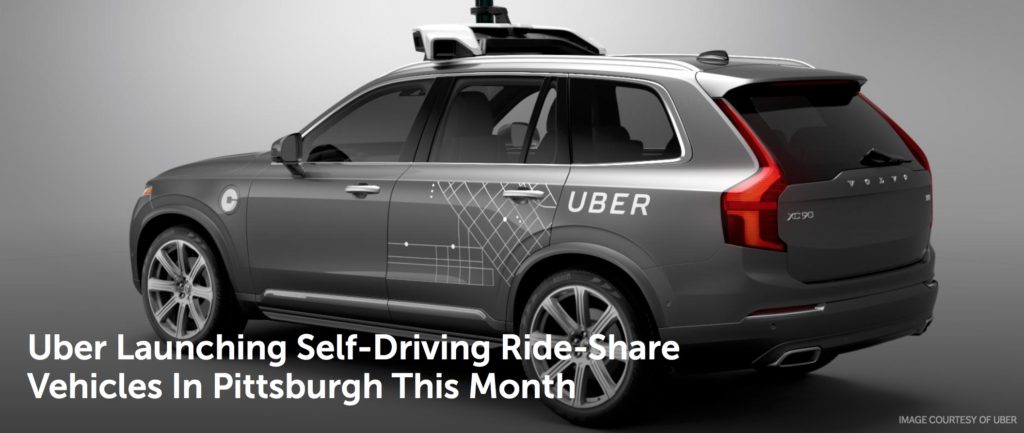
For whatever its reasons: to be seen as a innovation leader … due to bad press when a driver ran a little girl down and her family paid the funeral expenses because neither the driver nor Uber agreed to assume liability … Because the math shows that drivers make a lot less money than they thought they would after car expenses, wear and tear and time are calculated … or because Google and Tesla are hard on the heels of driverless technology revolution …
Whatever the reasons are, Uber is not waiting five years – or even one – to roll out driverless vehicles. Instead, the rollout launches this month in Pittsburgh, PA, with stand-by technicians at the wheels of cars and others taking notes but none} of them are supposed to interact with customers nor drive. Bloomberg provides details:
They’re trained engineers who sit with their hands on the wheel, prepared to take over if something unexpected happens. A copilot will assist from the passenger seat, taking notes, and everything is recorded by cameras inside and outside the vehicle. There’s also a tablet in the backseat telling passengers what’s going on, and urging them to pretend the other humans aren’t there.
“The goal is to wean us off of having drivers in the car, so we don’t want the public talking to our safety drivers,” Raffi Krikorian, the company’s engineering director, told Bloomberg.
Trips will be totally free at first, instead of $1.30 per mile, the local rate for Uber in Pittsburgh. Eventually, prices will fall so much that the cost of a driverless ride will be a lot cheaper than one in a private car, Kalanick says. As for why the company picked Pittsburgh — it’s where Uber has been working with robotics experts at Carnegie Mellon University.
The technology revolution has officially outdone itself.
